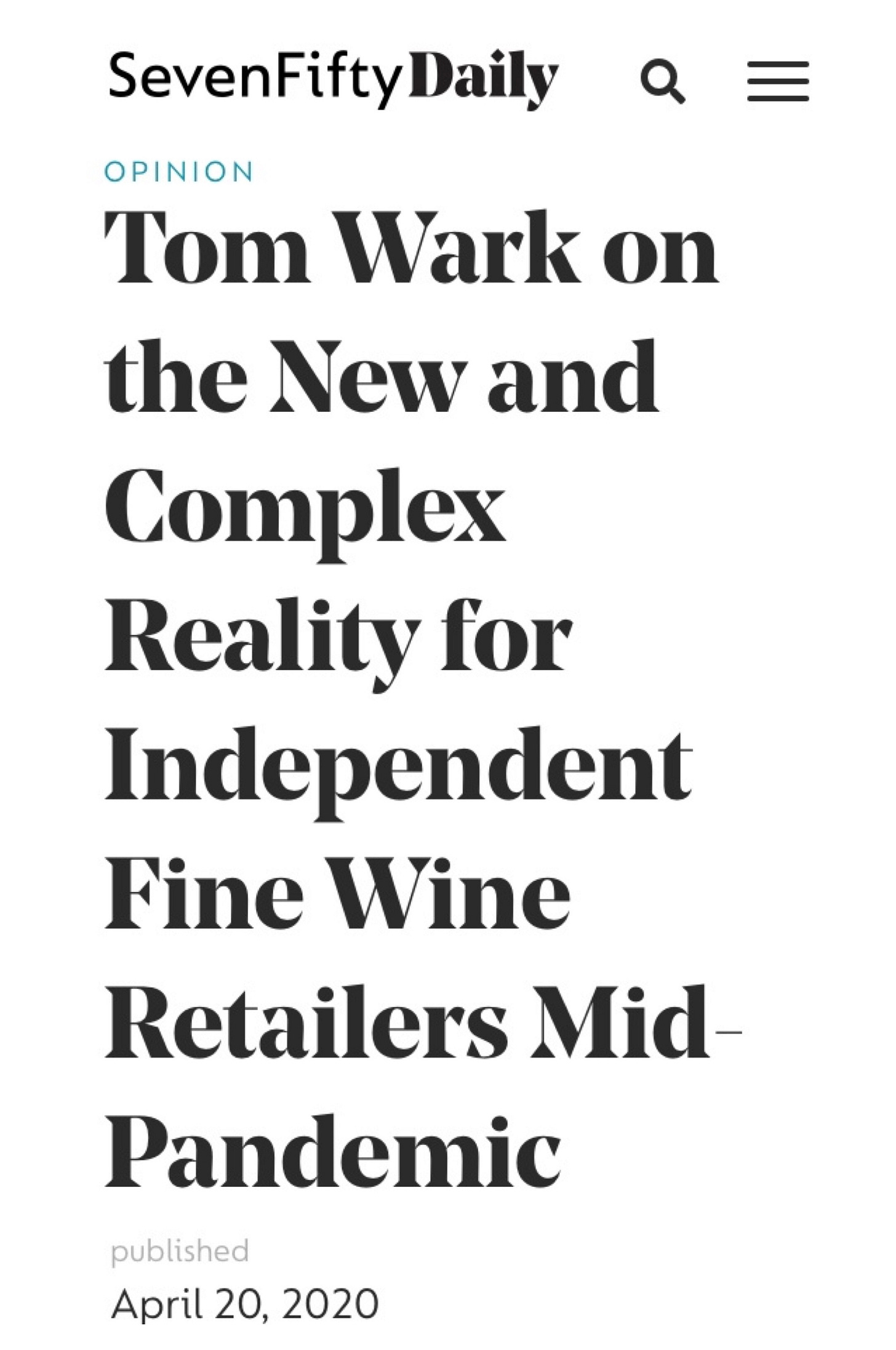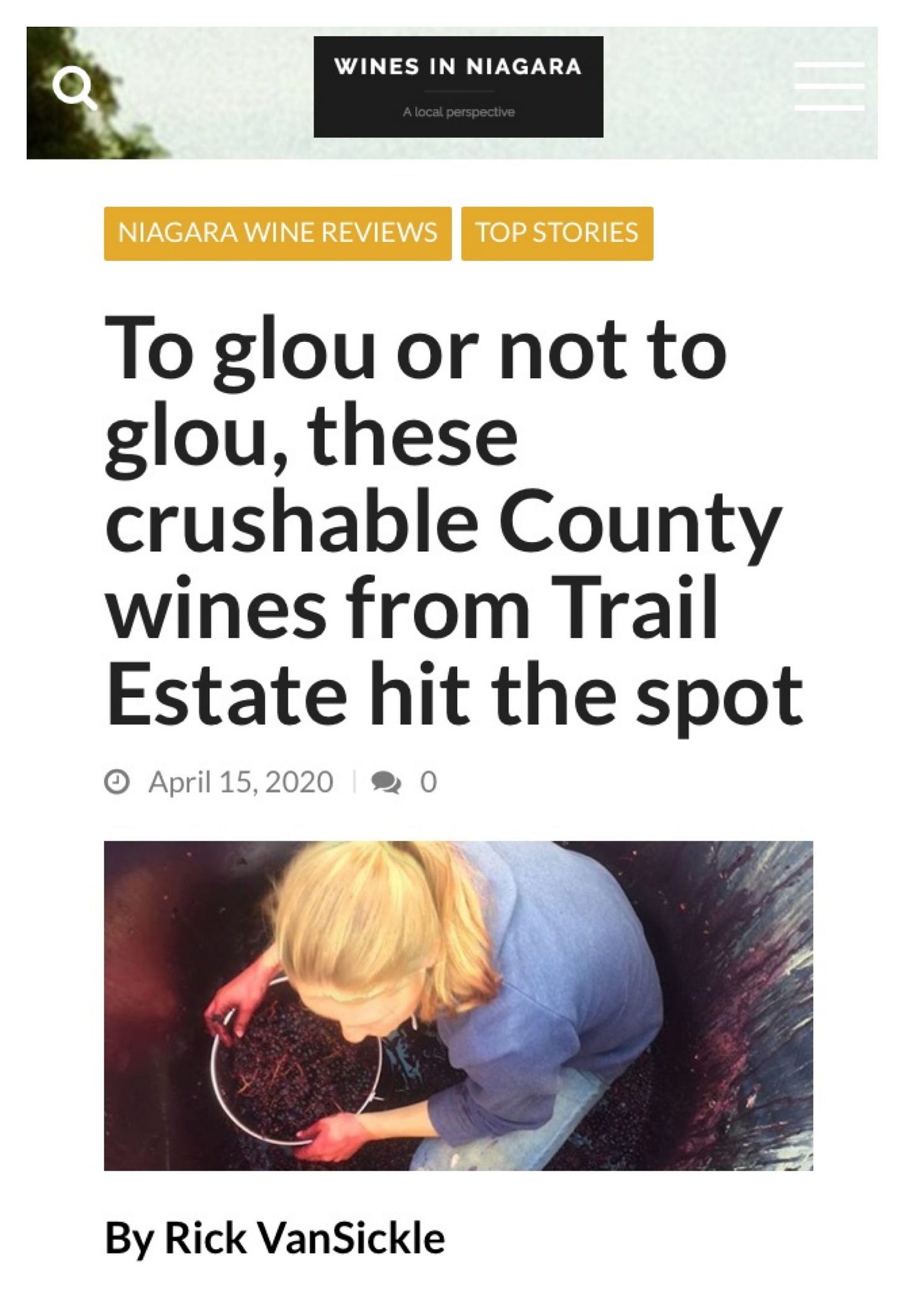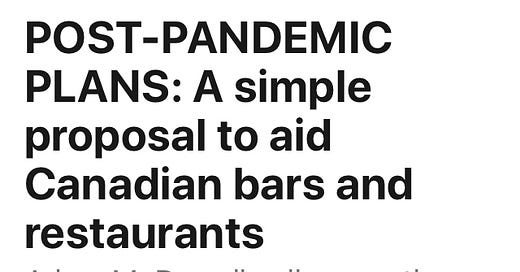A Changed Future Landscape?
Supporting Wine Businesses Post-Pandemic. The most recent issue of Moose Milk’s newsletter provides a proposal on how to help bars and restaurants survive COVID-19: “Let them buy alcoholic beverages at reduced wholesale prices.”
It is a surprisingly little-known fact that drinking and eating establishments in this country pay the same prices as civilians do for alcoholic products… According to Restaurants Canada, only Alberta and PEI allow establishments to buy all types of alcohol at wholesale pricing.
Their point is that higher profit margins will “give the eateries and drinkeries that we love a more forgiving margin for survival.” And Restaurants Canada agrees that establishments should be allowed to negotiate better prices for alcohol. Their Raise the Bar report (released Sept. 2019) — which evaluates the impact of provincial alcohol policies on the food services sector — recommended making wholesale pricing available to liquor licensees. They also said licensees should be able to sell alcohol for off-site consumption ie. takeout or delivery — which is currently being temporarily allowed in Ontario — but it will be interesting to see if the government makes it permanent post-pandemic, especially given their intention to modernize Ontario’s beverage alcohol system and provide more choice and convenience.

A Changed Future Landscape? SevenFifty Daily published an opinion piece from the National Association of Wine Retailers, who conducted a survey of 70 independent fine wine retailers in the U.S., between March 25 and April 10. The results show an off-premise industry that is “in flux”; the importance of e-commerce; and the possibility of permanent change:
This survey is unable to shed much light on what the off-premise world will look like when the orders for social distancing and self-quarantines have been lifted; so much depends on how Americans react to this unprecedented experience and how lawmakers respond to the inevitable calls to take a closer look at whether any of the various emergency measures, like loosened regulations on shipping and sales, could influence potential permanent changes.

The John Coltrane of Winemaking, is how Wines In Niagara describes Trail Estate winemaker Mackenzie Brisbois. Like the jazz legend, Brisbois is “a disruptor of rules and exploring the outer edges of normalcy” with how she makes her minimal intervention wines. A key factor in her process is using wild fermentation (wine is made when grapes are fermented ie. yeast eats the sugar to create alcohol; this can be done using the wild or indigenous yeast that is naturally occuring on the grape and surrounding environment, or with selected commercial yeast):
The idea of selecting yeast has never appealed to me. It makes me feel like I am painting by numbers. While the end product can be beautiful, it lacks the beauty of imperfection. Great wines are not simple — the aromatics are complex, changing and opening with time, while the palate is layered, flavours are plentiful and finish long.
The post includes a Q&A with Brisbois, as well as reviews of some of Trail Estate’s newest wines — including the yet-to-be released Supersonic, a sparkling red made of Concord; Oh Julius, an unsulphured orange wine; and Little Fluffy Clouds, an unfiltered sparkler; — which can be purchased online (free shipping in Ontario on 6 or more bottles).

France’s New Natural Wine Designation ‘vin méthode nature’ can be used on labels by French natural wine producers who conform to a set of practices defined by a quality production charter. Eric Asimov wrote about the new designation, and while he provides many different perspectives, he believes that natural wine is “as much defined by the intention of the producer as it is by adherence to a set of rules”; and as long as consumers have access to info from trusted sources, they can make informed decisions:
Most consumers of natural wines have either educated themselves to know the difference, or put their trust in retailers, sommeliers and wine journalists to point them in the right direction. Relying on a label to guide curious consumers shopping for wine is a halfway measure, just as produce labeled organic in a supermarket is a far cry from the carefully grown produce sold by farmers at the greenmarket.
The article covers a lot of ground, including the difference between mainstream and natural wine (“It’s like comparing fresh cherries picked off a tree to red Life Savers”), and how the designation may impact small vs. larger producers, but in the end Asimov basically says buyer beware:
Ultimately, nothing is wrong with the French label, which is voluntary and available only to producers in France. But for people who have not educated themselves, it may merely provide the illusion of discernment. They may be buying wines that are made naturally according to a set of rules, but that are not in the end natural wines.



